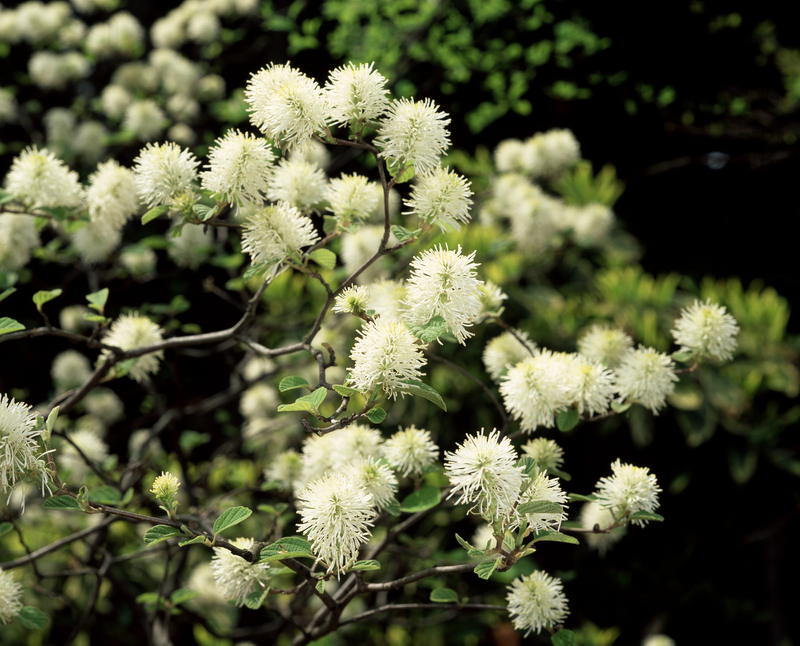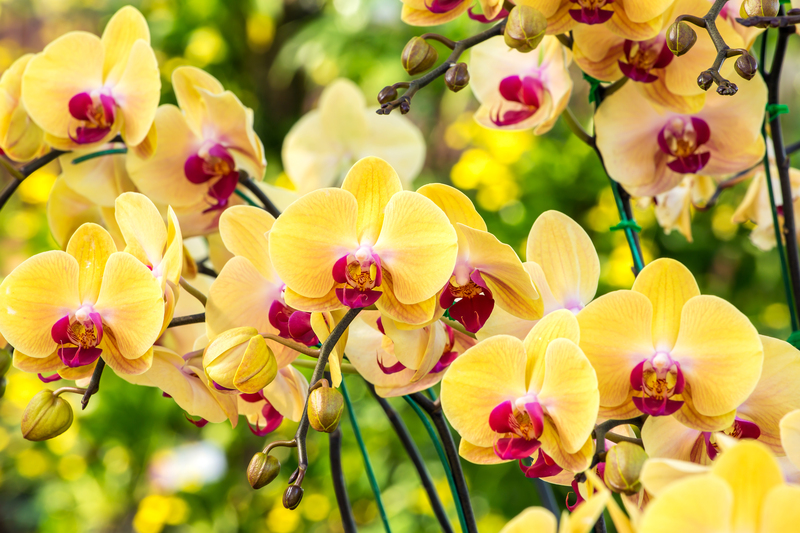Gardening Hacks: Keep Your Plants Thriving in Winter
Posted on 20/09/2025
Gardening Hacks: Keep Your Plants Thriving in Winter
As temperatures plummet and daylight dwindles, gardening can become more challenging, but you don't have to let your green thumb hibernate! With the right knowledge and preparation, you can keep your favorite plants not just surviving, but thriving during the winter months. In this comprehensive guide, we share the best gardening hacks to help your indoor and outdoor plants withstand winter's chill.
Understanding Your Plants' Winter Needs
Every gardener knows that winter gardening brings unique challenges. Cold temperatures, reduced sunlight, and dry indoor air can all impact plant health. The first of our winter gardening tips is understanding how different types of plants respond to changing conditions. This foundational knowledge helps you tailor care for each species, ensuring a lush, healthy garden year-round.
- Evergreen perennials tend to withstand cold better but still appreciate windbreaks and mulching.
- Tender annuals often require indoor relocation or protective coverings.
- Herbs and vegetables grown outdoors may need season extenders, such as cloches or cold frames.

Top Winter Gardening Hacks to Keep Plants Healthy
1. Mulch, Mulch, Mulch!
One of the best winter gardening hacks is generous mulching. In late autumn, apply a thick layer of organic mulch around the base of your outdoor plants.
- Mulch insulates the soil, maintaining a more consistent temperature.
- It helps retain soil moisture, which is crucial during dry winter spells.
- Prevents soil heaving caused by freeze/thaw cycles.
Tip: Use straw, shredded leaves, bark, or even evergreen boughs. Keep mulch a few inches away from plant stems to prevent rot.
2. Bring Tender Plants Indoors
Some plants can't survive the cold. Move them indoors before the first frost. Clean pots, inspect for pests, and place them in a bright, draft-free spot. For indoor winter plant care, keep these tips in mind:
- Humidity: Indoor air can become very dry. Place water trays near plants or use a humidifier.
- Sunlight: Place near south or west-facing windows for maximum light.
- Watering: Reduce watering since most plants go dormant; only water when the top inch of soil feels dry.
3. Smart Watering Strategies for Winter
Overwatering is a common winter gardening mistake. Plants use less water in winter, and excess moisture can lead to root rot, especially in cool, poorly drained soil. Follow these winter watering tips:
- Water early in the day so foliage dries before nightfall, preventing disease.
- Check soil moisture by inserting a finger or stick into the soil - only water if it feels dry 2-3 inches down.
- Avoid watering during freezing conditions to prevent damaging roots with ice.
4. Maximize Available Light
Short days and overcast skies reduce photosynthesis. Here's how to increase light for plants in winter:
- Clean windows and position plants for optimal sunlight exposure.
- Rotate pots weekly to promote even growth.
- Supplement with LED grow lights if natural light is insufficient.
Tip: For outdoor evergreens, brush off snow and ice gently to allow maximum sunlight penetration.
5. Use Cloches, Row Covers, and Cold Frames
Protecting vulnerable plants outdoors is key. Cloches and row covers act as mini-greenhouses, trapping warmth and shielding from frost.
- Cloches: Place over individual plants for quick frost protection.
- Row covers: Lightweight fabric draped over rows of vegetables prevent ice and chill damage.
- Cold frames: Simple structures with a slanted, transparent lid that let you grow greens year-round.
Pro Hack: You can upcycle old plastic bottles as mini cloches for seedlings and herbs.
Special Tips for Outdoor Gardens in Winter
Choose Hardy Plant Varieties
Not all species are created equal. Opt for winter-hardy plants like:
- Hellebores, snowdrops, and crocuses for early color.
- Hardy kale, spinach, Brussels sprouts for edible garden interest.
- Conifers, holly, and evergreen shrubs for year-round structure.
Windbreaks and Barriers
Cold winter winds can desiccate (dry out) leaves and stems. Install windbreaks such as:
- Temporary burlap screens
- Strategic planting of dense shrubs
- Old fencing or lattice to reduce wind speed
For potted plants outdoors, group them close together against a sheltered wall.
Protect Roots with Raised Beds
Raised beds improve drainage and warm up faster than ground soil in early spring. Consider installing a cold frame over your raised bed for a head-start on next season's sowings.
Don't Forget Container Plants!
Pots and containers are more vulnerable to frost penetration than in-ground plantings.
- Use frost-proof pots made of resin, fiberglass, or thick terracotta.
- Wrap containers with bubble wrap or horticultural fleece for extra insulation.
- Raise pots off the ground with bricks or pot feet to prevent waterlogging and freezing at the base.
Manage Snow and Ice
Snow can actually insulate plants, but heavy accumulations may break branches or crush foliage. Gently shake snow off evergreens, and avoid using harsh de-icers near your garden beds as they can damage roots.
Indoor Gardening Hacks for Winter Plant Care
Control Indoor Humidity
During winter, heating systems create dry air. To avoid crispy leaf edges and browning tips:
- Grouping plants together increases local humidity.
- Use pebble trays filled with water under pots (make sure pots don't sit directly in water).
- Mist foliage with lukewarm water, but do so sparingly to avoid fungal growth.
Monitor for Pests Inside
Pests, like spider mites, aphids, and whiteflies, may multiply indoors due to the absence of natural predators. Inspect leaves weekly, and remove any invaders using mild soapy water sprays or neem oil.
Keep an Eye on Temperature
Most houseplants prefer daytime temperatures between 65? and 75?F and cooler nights (no lower than 55?F). Keep foliage away from radiators, heaters, and drafty windows. Use a simple digital thermometer to monitor microclimates in your home.
Adjust Feeding During Dormancy
Winter growth slows; overfeeding can burn roots. Cut back on fertilizers and resume regular feeding in spring. If foliage looks yellow or weak, check your light and moisture levels first before feeding.
Advanced Winter Gardening Tips
Try Hydroponic or Indoor Microgreens
If outdoor gardening isn't possible, grow microgreens or use hydroponics indoors! These systems are ideal for fresh greens year-round--even in small spaces. All you need is a tray or countertop hydroponic kit, seeds, water, and a grow light.
Plan for Next Winter Now
Winter garden care is a year-round endeavor. In spring and summer, get ahead of cold weather by:
- Building compost bins for nutritious mulching material.
- Planting windbreak shrubs and designing your garden for optimal shelter.
- Testing your soil and amending it to improve drainage before frost arrives.
Utilize Technology
Smart garden sensors can monitor soil moisture, temperature, and even light exposure, giving real-time feedback via your smartphone. Some systems are affordable and simple to use, offering an extra layer of confidence during winter's uncertain conditions.
Prepare for Winter Wildlife
Birds and small mammals may be attracted to winter gardens, seeking food and shelter. While this adds life and beauty, protect new shoots and buds with mesh nets or physical barriers to avoid nibbling damage. You can also add bird feeders to draw wildlife away from your precious plantings.

Frequently Asked Questions About Winter Gardening
Can I grow vegetables in winter?
Yes! With the help of cold frames, row covers, or a greenhouse, you can enjoy hearty greens like spinach, kale, and Swiss chard, plus root veggies such as carrots and radishes. Winter gardening for vegetables requires planning, the right varieties, and adequate protection.
Do I need to water my garden in winter?
Sometimes! If winter is dry and the ground isn't frozen, water during mild spells, especially for evergreens and newly-planted shrubs. Don't let root balls dry out, but avoid soggy soil, which leads to rot.
What are the best ways to keep potted plants alive in winter?
Group pots together, wrap them for insulation, place against sunny, sheltered walls, and avoid standing water underneath. For very tender species, move pots indoors to a cool, bright location.
My indoor plants are losing leaves--is this normal?
Some leaf drop is normal as plants adjust to lower light. However, check for drafts, overwatering, or pest issues if leaf loss seems excessive. Increasing light and humidity can help reduce stress.
Conclusion: Your Winter Garden Can Thrive!
Winter doesn't have to mean a lifeless garden. With a little creativity, smart preparation, and our essential winter plant care hacks, both indoor and outdoor gardens can stay lush and healthy even during the year's coldest months.
- Remember to mulch and shelter your plants, adapt watering practices, and maximize light.
- Choose hardy varieties and use protective structures outdoors.
- Indoors, boost humidity, inspect for pests, and keep plants in well-lit, draft-free areas.

